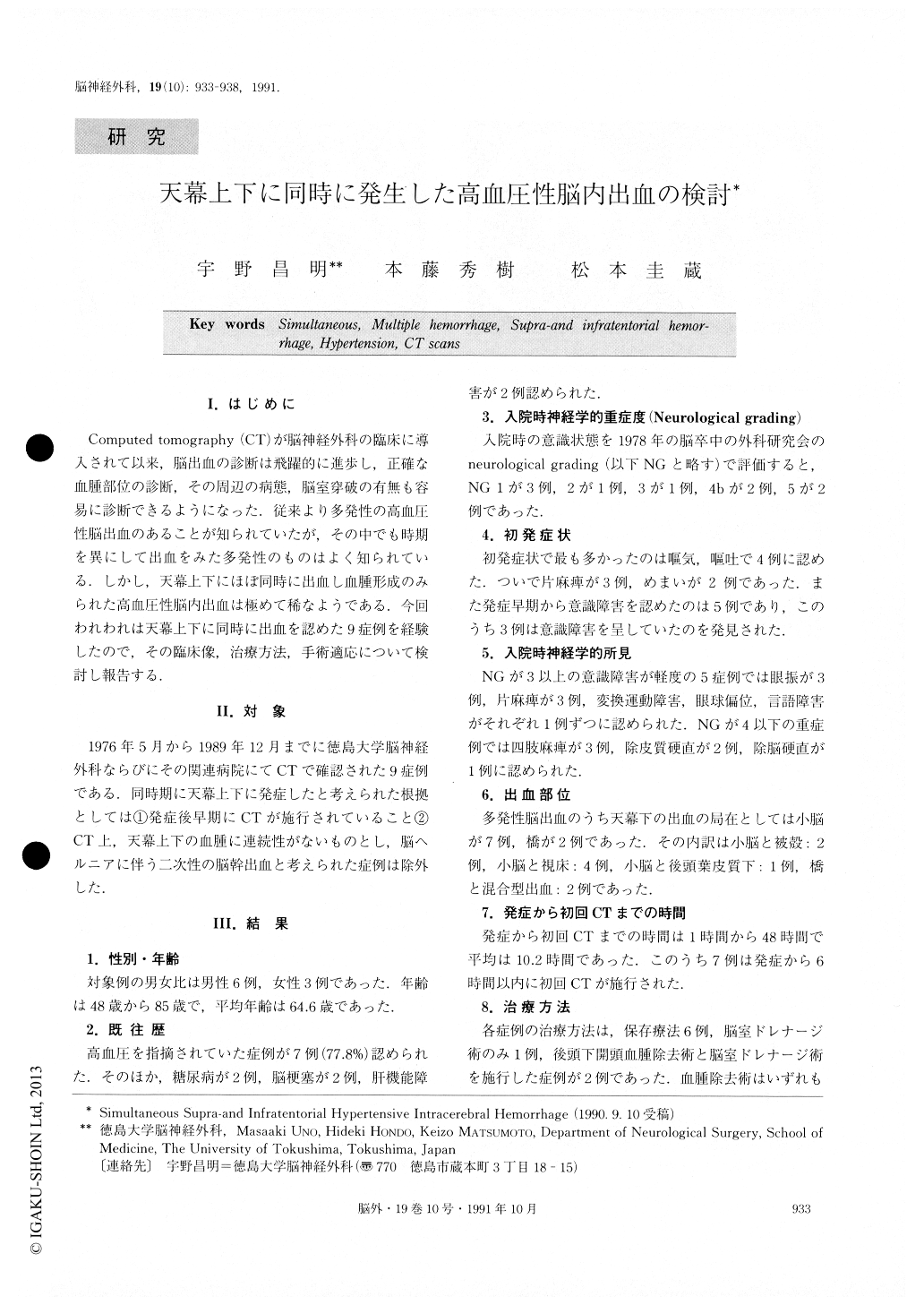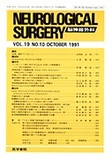Japanese
English
- 有料閲覧
- Abstract 文献概要
- 1ページ目 Look Inside
I.はじめに
Computed tomography(CT)が脳神経外科の臨床に導入されて以来,脳出血の診断は飛躍的に進歩し,正確な血腫部位の診断,その周辺の病態,脳室穿破の有無も容易に診断できるようになった.従来より多発性の高血圧性脳出血のあることが知られていたが,その中でも時期を異にして出血をみた多発性のものはよく知られている.しかし,天幕上下にほぼ同時に出血し血腫形成のみられた高血圧性脳内出血は極めて稀なようである.今回われわれは天幕上下に同時に出血を認めた9症例を経験したので,その臨床像,治療方法,手術適応について検討し報告する.
Abstract
Multiple intracerebral hemorrhage may occur as re-bleeding at the site of the previous lesion or in other places. However, multiple intracerebral hemorrhage occurring simultaneously in the supra-and infratentorial regions is rare. We experienced 9 such cases between May 1976 and December 1989. The clinical symptoms, CT findings and outcome of our cases and of 4 cases which were previously reported in the literature are re-viewed in this paper.
Out of 13 cases, 11 patients had cerebellar hemor-rhage, and the others had pontine hemorrhage in the infratentorium. Among the supratentorial lesions, 11 in-volved hemorrhage in the putamen or the thalamus, and the others were in the subcortical region. There were no characteristic initial symptoms or neurological signs which suggested that hemorrhage had occurred in both the supra-and infratentorial regions. The only methods by which we could recognize this exceptional situation were the CT scan and MRI scan.
The outcome in those patients whose initial neurolo-gical grading (NG) was 1 to 3 was good with conserva-tive therapy or surgical treatment. On the other hand, the outcome in patients whose initial NG was 4 or 5 was very poor no matter what treatment was used.
As far as surgical treatment is concerned, we believe that hematoma evacuation is necessary when the cere-bellar hematoma is bigger than the supratentorial hematoma.

Copyright © 1991, Igaku-Shoin Ltd. All rights reserved.


